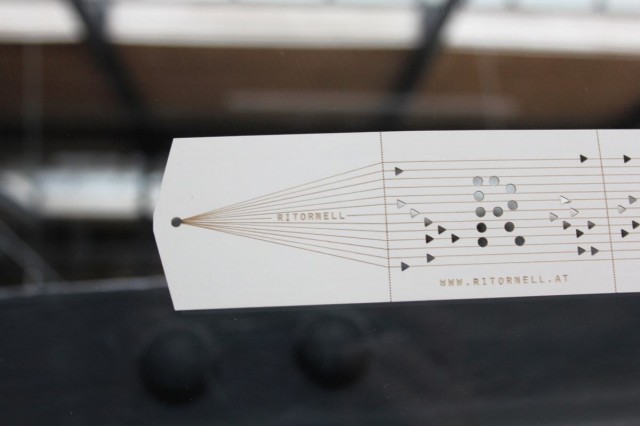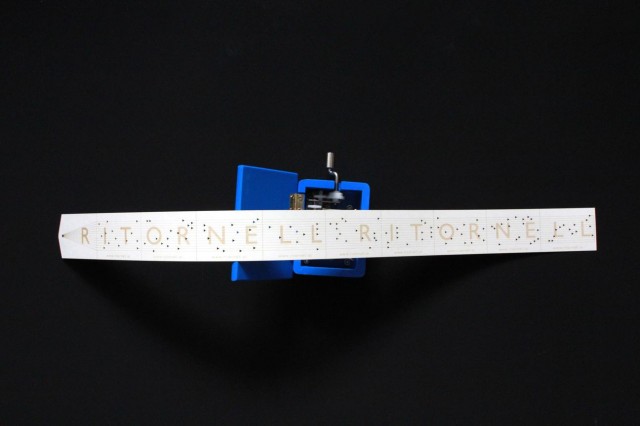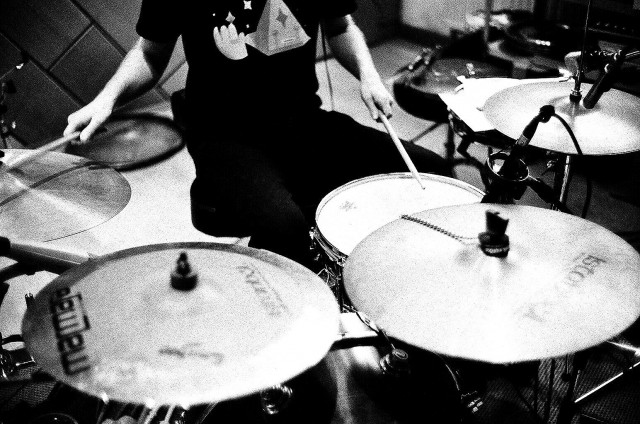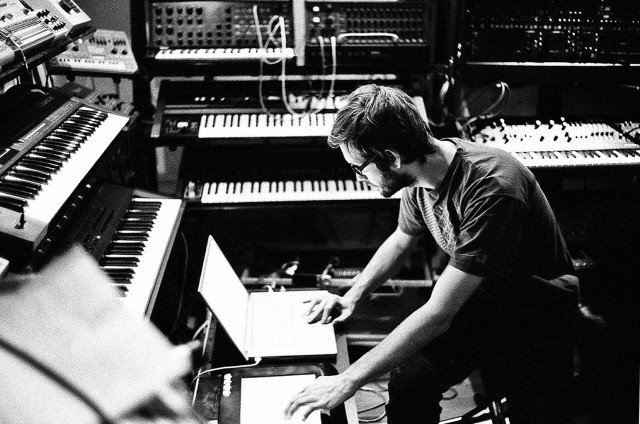Experimenting with twinkling timbres made both by acoustic and electronic means, the music of Ritornell (the duo of composer Dr. Richard Eigner and pianist Roman Gerold, Austria) is effortlessly expressive and spontaneous. Little wonder that that spirit could translate even to a small object.
Designer Katharina Hölzl made business cards into both a signature identity for Ritornell and a physical manifestation of how they play their music. They’re not just a physical gimmick, though: audiences get to participate with music making in the production of live, performative loops. (Sadly, no site for Katharina – you just have to get hold of one of her designs!)
Description of the project:
Ritornell’s business cards are inspired by the project’s live show. The improvised concerts evoke a lively atmosphere by the combination of filigree electronics with playful timbres of diverse acoustic instruments and utensils such as egg whisks, toilet brushes, chopsticks or sewing needles. As an integral part of their set list, Ritornell invites the audience to bring along their private musicboxes. Arranged in a big circle, the players’ speed of turning levers is conducted: the results are as shimmering as you would expect.
Katharina Hölzl designed very special business cards to recreate this playful sonic universe. With the aid of laser assisted milling, nine micro compositions consisting of circles, triangles and Ritornell’s contact information were applied onto a long musicbox paper stripe. Before handing out the cards to interested adressees, each individual subdivision is played back via an especially designed musical box – thus providing every business card receiver with a tailor made musical experience.
More information on the project:
Ritornell for Musicbox
Punched cards of this kind of a profound relationship to generative music and computer music. For its part, the very genesis of the computer comes from punched cards: the punched cards in early mechanical looms used for textiles would inspire Charles Babbage. It’s possible that Max Mathews’ first digital audio, and other computer music that employed punched cards, would not have done so without the precedent of the textile industry.
And, of course, the music box and player piano also owe their genesis to punched cards, and thus the pre-digital mechanical reproduction of music. In an era before MIDI, composer Conlon Nancarrow made his own piano rolls, punched to his custom specifications, to play parts that would otherwise be impossible – before complex, glitchy, tracker-made electronic music. (Kyle Gann has a great piece on Nancarrow.) Those piano rolls have echoes in the interactive work of digital artist Toshio Iwai, and in the mechanical, push-button simplicity of the falling tracks of gems in music games from developers like Harmonix. By adding hand-cranked audience participation, though, Ritornell brings the mechanism into the realm of jazz.
And speaking of jazz influence, it’s well worth looking at the rest of the music of Ritornell.
As glowing ambient worlds cross paths with cooly-casual jazz, Ritornell’s music is to me endlessly evocative. Jazz gesture and good humor merge with waves of richly-imagined sonic textures. It’s music that’s both cinematic and improvisatory, dreamlike but well worth repeated listens. (I find it quite hard not to put it on loop, with warm swells of timbre against percussive rhythms, it fits perfectly with the deep mustard and gold hues of the last wave of autumn leaves in November.)
With the slightly-distant allure of Vienna-based vocalist Mimu added to the mix, the music is a kind of ambient pop reverie.
Don’t miss the music videos, shot seemingly through a thick, warm mist. And check out the rest of the music on the site. I hope we hear more from these folks.
Listening:
Golden Solitude, an eclectic, jazz-inflected sonic journey of an LP
Richard Eigner also did drums on “German Haircut” for Flying Lotus’ epic Cosmogramma





